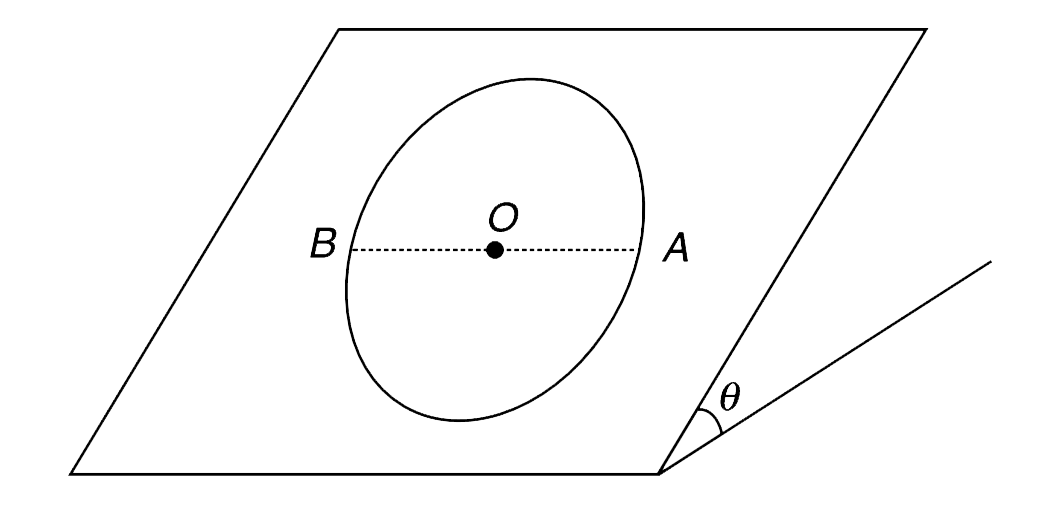A car's speedometer is correctly calibrated for tires of a specific size. If larger diameter tires are substituted, what will be the effect on the speedometer reading ?
Step by step video & image solution for A car's speedometer is correctly calibrated for tires of a specific size. If larger diameter tires are substituted, what will be the effect on the speedometer reading ? by Physics experts to help you in doubts & scoring excellent marks in Class 11 exams.
Updated on:21/07/2023Topper's Solved these Questions
- KINEMATICSBOOK - PHYSICS GALAXY - ASHISH ARORACHAPTER - KINEMATICSEXERCISE - Conceptual MCQs Single Option Correct
35 Videos
- KINEMATICSBOOK - PHYSICS GALAXY - ASHISH ARORACHAPTER - KINEMATICSEXERCISE - Numerical
111 Videos
- KINEMATICSBOOK - PHYSICS GALAXY - ASHISH ARORACHAPTER - KINEMATICSEXERCISE - Practice Exercise
96 Videos
- GRAVITATIONBOOK - PHYSICS GALAXY - ASHISH ARORACHAPTER - GRAVITATIONEXERCISE - Unsolved Numerical
94 Videos
- LINEAR MOMENTUM & ITS CONSERVATIONBOOK - PHYSICS GALAXY - ASHISH ARORACHAPTER - LINEAR MOMENTUM & ITS CONSERVATIONEXERCISE - exercise 1.3
3 Videos
Similar Questions
A car's speedometer read the speed of car.Will there be a correction in speedometer if tyres become old (snowed tyres).
View SolutionThere is some problem in the speedometer of Raju's car. It always indicates a value twice the actual value. One day, he drives the car to a mechanic shop for repair. The shop is 100 km from his house. It takes 5 h to reach the destination with a constant speed. What will be the reading of the speedometer?
View Solution
Knowledge Check
Suppose a car's standard tires are replaced with tires 1.50 times larger in diameter. Will the car's speedometer reading be.
A2.25 times too highB1.50 times too highC1.50 times too lowD2.25 times too lowWhat does the speedometer of a vehicle read/ measure ?
AAverage Speed,BAverage Velocity,CInstantaneous Speed,DInstantaneous Velocity.Read the following text and answer the following questions on the basis of the same:
Electromagnetic damping: Take two hollow thin cylindrical pipes of equal internal diameters made of aluminium and PVC, respectively. Fix them vertically with clamps on retort stands.
Take a small cylindrical magnet having diameter slightly smaller than the inner diameter of the pipes and drop it through each pipe in such a way that the magnet does not touch the sides of the pipes during its fall. You will observe that the magnet dropped through the PVC pipe takes the same time to come out of the pipe as it would take when dropped through the same height without the pipe. Now instead of PVC pipe use an aluminium pipe. Note the time it takes to come out of the pipe in each case. You will see that the magnet takes much longer time in the case of aluminium pipe. Why is it so? It is due to the eddy currents that are generated in the aluminium pipe which oppose the change in magnetic flux, i.e., the motion of the magnet.
The retarding force due to the eddy currents inhibits the motion of the magnet. Such phenomena are referred to as electromagnetic damping Note that eddy currents are not generated in PVC pipe as its material is an insulator whereas aluminium is a conductor. This effect was discovered by physicist Foucault (1819-1868).
What is electromagnetic damping ?AGeneration of electromagnetic wave during the passage of a magnet through a metal pipeBChange of the direction of propagation of electromagnetic wave due to a variable magnetic fluxCChange of the frequency of electromagnetic wave due to a variable magnetic fluxDTo slow down the motion of a magnet moving througha metal pipe due to electromagnetically induced current.
A car accelerates uniformly from rest and reaches a speed of 27m/s in 9.00s. If the diameter of a tire is 60cm, find (a) the number of revolutions the tire making during this motion, assuming that no slipping occurs. (b) What is the final rotational speed of a tire inrevolutions per second.
View SolutionDuring your study in a junior school you were told that light travels in a straight line. But now you know that light travels as a wave and it can bend around objects.
In optical region light has a wavelength of about half a micrometre. If it encounters an obstacle of about this size, it may bend around it and can be seen on the other side. however, if the obstacle is much larger, light will not be able to bend to that extent and will not be seen on other side.
This is a general property of waves and can be seen in sound waves too. the sound wave of our spech has a wavelength of about 50 cm-1m. if it meets an obstacle of the size of a few metres, it bends around it and reaches points behind the obstacle. but when it comes, across a larger obstacle of a few hundred metres, such as a hillock, most of it is reflected back and is heard as an echo.
Q. In a single-slit diffraction experiment if width of the slit is made double of its original width, then what would be the effect on the central diffraction maximum observed on the screen?
View SolutionA Car accelerates uniformaly form rest. If the reading on the speedometer after 5 s is kmh−1
View SolutionWhat does the speedometer of a car measure average speed or instantaneous speed ?
View SolutionA car is being driven on a tilted ground. The ground makes an angle θ with the horizontal. The driven drives on a circle of radius R. The coefficient of friction between the tires and the ground is μ.
(a) What is the largest speed for which the car will not slip at point A? Assume that rate of change of speed is zero.
(b) What is the largest constant speed with which the car can be driven on the circle without slipping?

View Solution
